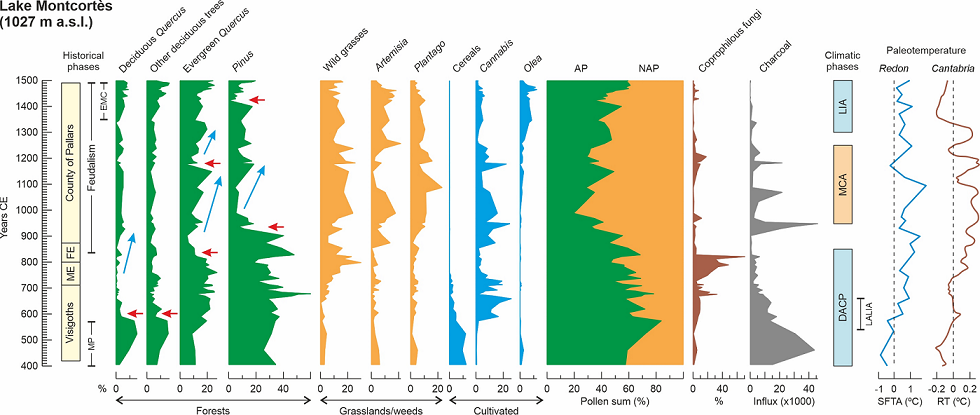This paper compares the Medieval (ca. 400–1500 CE) dynamics of forests from low-mountain (Montcortès; ca. 1000 m a.s.l.) and high-mountain (Sant Maurici; 1900 m a.s.l.) areas of the Iberian Pyrenees, both of which experienced similar climatic forcing but different anthropogenic pressures. The main aim is to identify forest changes over time and associate them with the corresponding climatic and anthropogenic drivers (or synergies among them) to test how different forests at different elevations respond to external forcings. This could be useful to evaluate the hypothesis of general Pyrenean deforestation during the Middle Ages leading to present-day landscapes and to improve the background for forest conservation. The study uses palynological analysis of lake sediments, historical documents and paleoecological reconstructions based on pollen-independent proxies. The two sites studied showed different forest trajectories. The Montcortès area was subjected to intense human pressure during regional deforestation up to a maximum of ca. 1000 CE. Further forest recovery took place until the end of the Middle Ages due to a change in forest management, including the abandonment of slash-and-burn practices. Climatic shifts indirectly influenced forest trends by regulating human migrations and the resulting shifts in the type and intensity of forest exploitation. The highland Sant Maurici forests exhibited a remarkably long-standing constancy and an exceptional resilience to climatic shifts, which were unable to affect forest extension and composition, and to local human pressure, from which they rapidly recovered. The Montcortès and Sant Maurici records did not follow the rule of an irreversible forest clearing during the Middle Ages leading to present-day landscapes. The present Montcortès landscape was shaped after a Medieval forest recovery, a new Modern-Age deforestation and a further forest recovery during the last centuries. The Sant Maurici forests remained apparently untouched since the Bronze Age and were never cleared during the Middle Ages. The relevance of these findings for forest conservation is briefly addressed, and the need for the development of more high-resolution studies on Pyrenean forest dynamics is highlighted.

